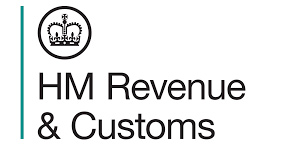HMRC SDLT: Definitions and Guidelines for Freeports and Investment Zones Land Use Relief
SDLTM20230 – Freeports and Investment Zones Relief: Use of Land in a “Qualifying Manner”
This section explains the definitions related to the use of land in a qualifying manner for Freeports and Investment Zones relief. It covers terms such as “connected person,” “commercial,” “excluded rents,” and “property rental business,” with references to relevant HMRC guidance for further details.
- Connected Person: Defined under section 1122 of the Corporation Tax Act 2010.
- Commercial: Activities carried out on a commercial basis with a view to profit.
- Excluded Rents: As defined for the Annual Tax on Enveloped Dwellings (ATED) in the Finance Act 2013.
- Property Rental Business: Defined by Chapter 2 of Part 3 of the Income Tax (Trading and Other Income) Act 2005.
“`

Read the original guidance here:
HMRC SDLT: Definitions and Guidelines for Freeports and Investment Zones Land Use Relief
SDLTM20230 – Freeports and Investment Zones Relief: Using Land in a ‘Qualifying Manner’ – Definitions
Overview of Key Terms
In relation to the SDLTM20230 guidance on Freeports and Investment Zones, certain specific terms have particular meanings that are important to understand. The following explains these key terms to clarify their definitions within the context of tax relief for land use.
Connected Person
A connected person refers to someone who has a defined relationship with another person, as specified in section 1122 of the Corporation Tax Act 2010. This section lays out criteria to identify when two individuals or entities can be considered as connected. Essentially, this could involve situations where family ties, business partnerships, or shareholdings link the two parties.
– Example: If Person A owns shares in Company B, and also happens to be related to Person C, who manages Company B, then Person C is a connected person to Person A under the specified guidelines.
For more detailed information on the definition of connected persons, you can refer to HMRC’s specific guidance [here](https://stampdutyadvicebureau.co.uk/hmrc/SDLTM0000).
Commercial Activity
The term commercial indicates that an activity is done with the aim of making a profit. This means that the activity is structured in a way where it is undertaken as a business, rather than as a hobby or personal pursuit.
– Example: If an individual buys land and develops it into rental properties with the expectation of earning income, this is considered a commercial activity.
For more information on how to determine if an activity is performed on a commercial basis, you can visit HMRC’s guidance [here](https://www.gov.uk/hmrc-internal-manuals/business-income-manual/bim85705).
Excluded Rents
When discussing excluded rents for land located within a special tax site, it’s important to refer to guidelines provided under section 133 of the Finance Act 2013. Excluded rents indicate specific types of rent that are not subject to certain tax regulations.
– Example: Rent derived from properties that are part of a specific agreement that qualifies for exemption under the Annual Tax on Enveloped Dwellings (ATED) would be considered excluded rents.
For further details about what falls under excluded rents, please check paragraph 31.5 of HMRC’s ATED technical guidance [here](https://www.gov.uk/government/publications/annual-tax-on-enveloped-dwellings-technical-guidance).
Property Rental Business
The term property rental business is specifically defined in Chapter 2 of Part 3 of the Income Tax (Trading and Other Income) Act 2005. This definition covers various activities related to renting out property, establishing what qualifies as a genuine rental business for tax purposes.
– Example: If a person owns multiple residential properties and regularly rents them out as a primary source of income, this activity qualifies as operating a property rental business.
To gain additional insights into what constitutes a property rental business, you can refer to HMRC’s guidance [here](https://www.gov.uk/hmrc-internal-manuals/property-income-manual/pim1020).
Understanding Freeports and Investment Zones
Freeports and Investment Zones are specific areas where the government offers tax reliefs to encourage economic growth and investment. Understanding how to utilise land in a qualifying manner within these zones is vital for individuals and businesses looking to benefit from these opportunities.
Freeports
Freeports are designated areas near ports or airports where normal tax and customs rules do not apply. Businesses operating in these areas can access various tax benefits, which may include:
– Relief from certain duties and taxes
– Simplified customs procedures
– Other financial incentives aimed at boosting exports and attracting foreign direct investment
Investment Zones
Investment Zones are regions where the government aims to encourage business investment through additional financial incentives. Key features often include:
– Tax reductions for businesses investing in eligible areas
– Enhanced capital allowances
– Flexibility in planning regulations to simplify the establishment of new businesses
For both Freeports and Investment Zones, understanding the specifics of land usage and compliance is essential to ensure that activities meet the necessary criteria for tax relief.
Use of Land in a Qualifying Manner
To take advantage of the reliefs available in Freeports and Investment Zones, it’s crucial to ensure that land usage meets the definition of a qualifying manner. The term relates to how the land is employed, ranging from commercial operations to eligible development activities.
Qualifying Activities
Qualifying activities might include:
– Manufacturing processes
– Distribution and logistics operations
– Research and development facilities
– Technological enhancements or innovations directed at business growth
It is important for businesses to demonstrate how their operations align with the requirements laid out in the SDLTM20230 guidelines, to ensure compliance and access to the financial benefits available.
Documentation and Compliance
For individuals or companies operating in Freeports or Investment Zones, proper documentation and adherence to compliance regulations are critical. This may involve:
– Keeping accurate financial records of all transactions related to property use
– Maintaining clear evidence of commercial intent
– Adhering to any reporting requirements specified by HMRC
Ensuring that all these factors are in place helps to validate the claim for tax relief under the SDLTM20230 conditions effectively.
Conclusion
Understanding these definitions and key concepts related to SDLTM20230 is necessary for effectively navigating the tax relief opportunities available within Freeports and Investment Zones. By ensuring that activities around land use meet qualifying criteria, businesses can leverage the available benefits to stimulate growth and investment.







